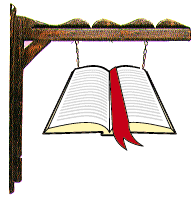



Explore Printing Outside of Guild Hall
Greetings! I have traveled far coming from Germany to recruit apprentices for the printing shop of Fust and Schoeffer. I am Peter Schoeffer, once an apprentice to Gutenberg and now partner in my own business. I was forced to leave Gutenberg's employ and joined up with Fust, and even Fust's daughter, so you can say we are now a family business. But that is another story that I will tell you later. Right now it is more important that you gain an understanding of what fueled the invention of the printing press.
A crisis in the world of books began occuring just prior to the Renaissance. The number of churches and monasteries had radically increased toward the end of the Middle Ages and each one required its own copy of the Bible along with prayer books and books of psalms. Along with this religious demand was a secular one brought on by the increase in the numbers of noble families who wanted books to fill their libraries as a show of how cultured and learned they were.
With the demand for the number of books rising, many people must have searched for a way of producing books more quickly and cheaply than by the use of scribes manually copying and creating books. Because of the secrecy inherent in the guild structure (there is no patent law to stop the copying of someone else's invention), records are scarce as to these experimentations. It is likely that people, unknown to each other, were working toward the invention of printing in the Netherlands, Italy, and France.
This has led to many rival claims for the invention of moveable type in the printing process. But I was there and I can attest that Gutenberg should be credited as the inventor of the printing process involving metal movable type and a printing press. It is also possible to trace the growth and spread of printing throughout Europe and even the New World (North America to you) back to Gutenberg's work in Mainz, Germany during the early 1450s.
It is interesting to note some of the others who were working toward this same end during this period. Laurens Coster of Haarlem, a Dutchman, used movable type first in 1423. The Italian, Pampilo Castaldi, led the way to the use of movable type. Also, Procopius Waldfoghel, a Czech living in Avignon, France, was working on "writing artificially" in 1444.
However it was an act of war which helped spread Gutenberg's secret printing process throughout the world. The Archbishop of Mainz died in 1459 and a war sprung up amongst the citizenry over which of two rivals had the rightful claim as his successor. Most of the citizens of Mainz backed the loser in the war and when the winner became the Archbishop he exacted his revenge: He ordered all the men young and fit enough to fight to leave the city. This meant that the young printers within the city had to beat a hasty retreat to other towns along the rivers Rhine and Main. It was in towns such as Bamberg, Strasbourg and Cologne, that these young printers set up printing shops of their own. Gutenberg's secret process was out and the astonishing chain reaction spread the craft of print thoughout Europe and beyond. Monasteries set up printing works, presses were attached to places of learning such as universities and businesses sprang up around the printing process. By 1464, two Germans set up the first press in Italy. Another German printer, John of Speier, set up a press in Venice in 1469. Within ten years Venice became the world capital of printing and publishing. At the same time, the first press in France started work in 1470, followed in 1471 by the Netherlands, in 1472 by Switzerland, in 1475 in Spain, and in 1476 by England.
So you can see that apprentices are in high demand with so many shops springing up. I would like to take you to my shop in Mainz, Germany and show you the processes involved. While there you may look at the notes on Gutenberg that I have kept over the years.